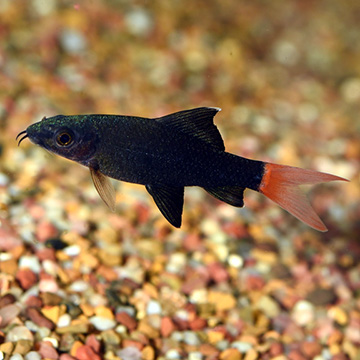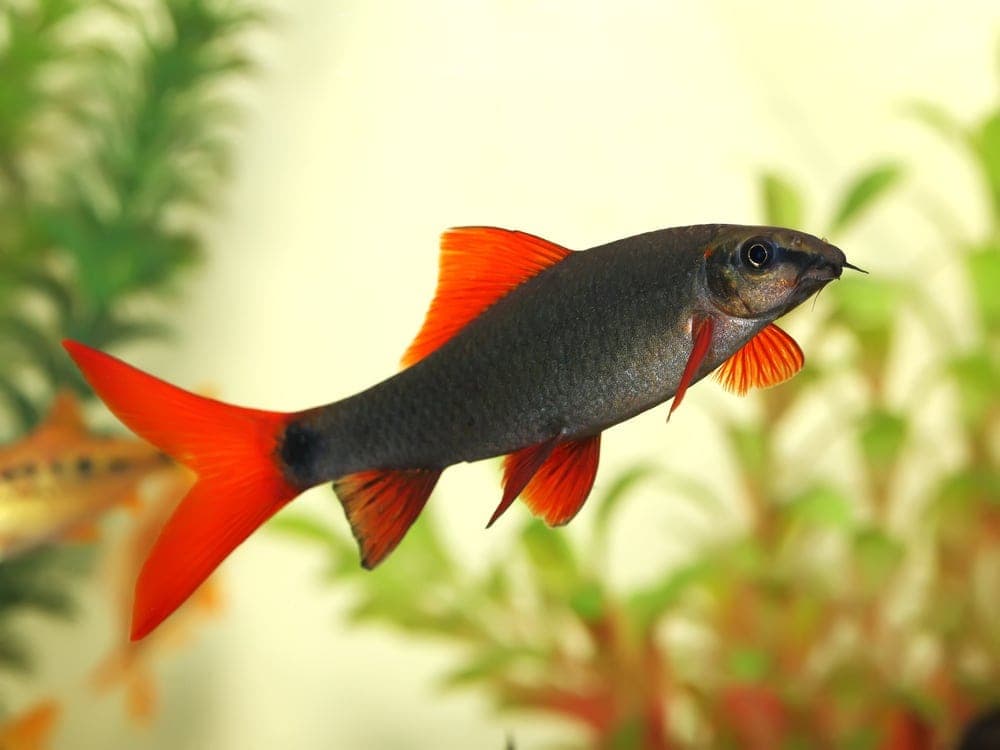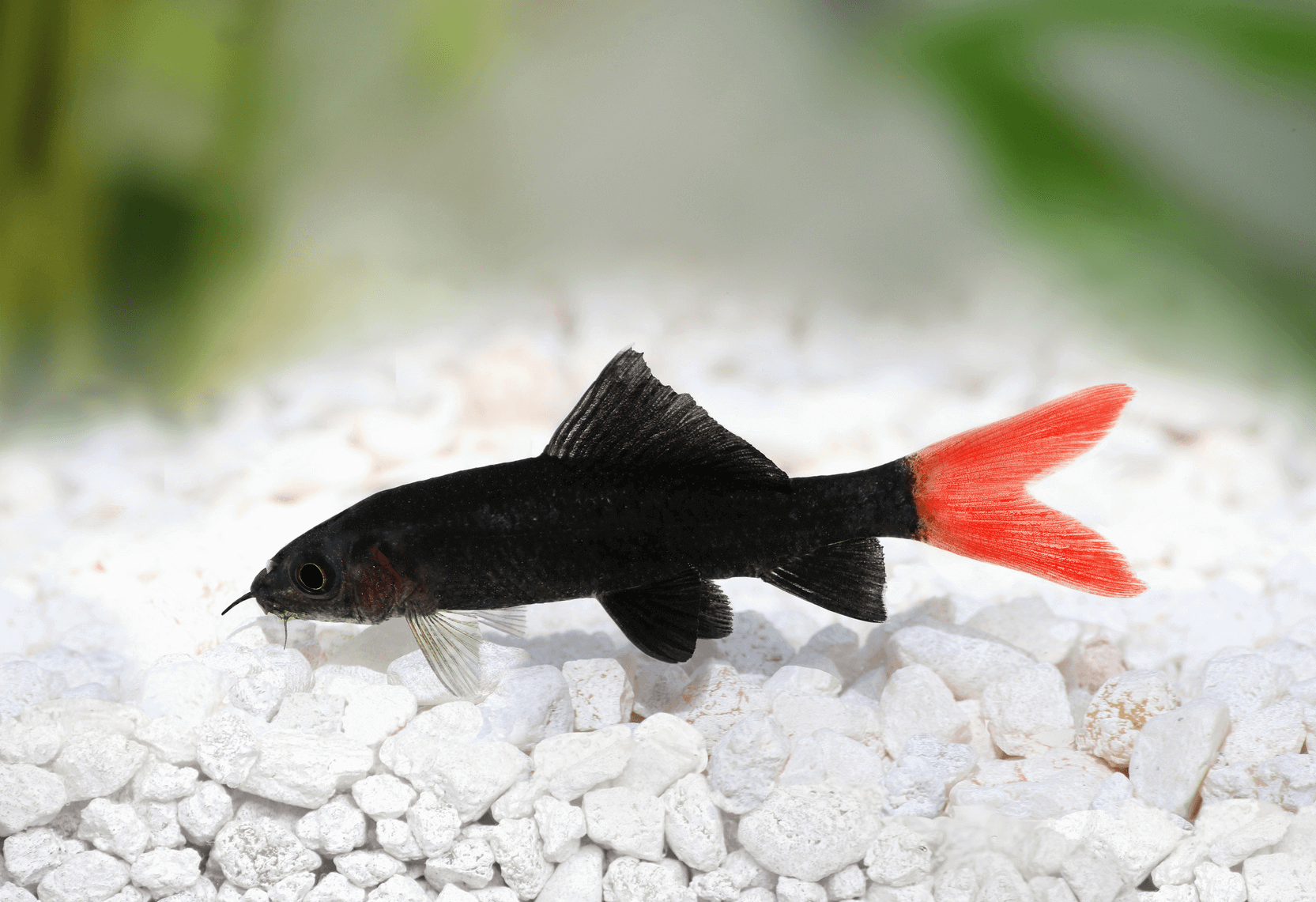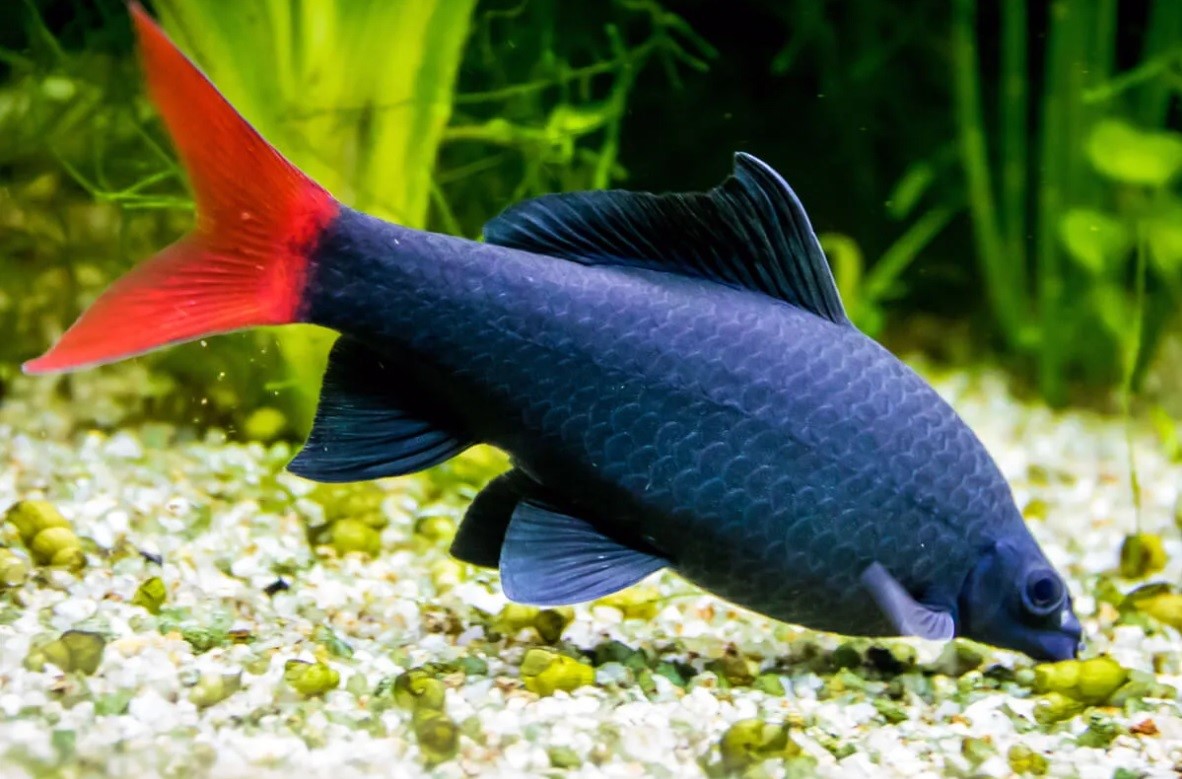Redtail Shark
The redtail shark is a popular freshwater fish among aquarists due to its vibrant appearance. With its striking red tail and black body, it adds a touch of color to any aquarium. However, there's more to this fish than meets the eye. If you're considering adding a redtail shark to your tank, read on to learn more about this fascinating species.
Potential Pain Points with Redtail Sharks
While redtail sharks may seem like a great addition to your tank, there are some potential issues to be aware of. For starters, these fish can be aggressive towards other bottom-dwelling species. Additionally, they require a specific diet to stay healthy and can become stressed if their tank isn't properly maintained. Because of these challenges, it's important to do your research before bringing a redtail shark into your aquarium.
The Target of Redtail Sharks
Redtail sharks are native to Thailand and can be found in freshwater rivers and streams throughout the region. They typically grow to be 4-6 inches long and require a tank of at least 50 gallons to thrive. In terms of behavior, redtail sharks are most active during the day and spend much of their time exploring the bottom of the tank.
Summary of Main Points About Redtail Sharks
To recap, redtail sharks are a species of freshwater fish known for their striking appearance and active behavior. While they can be challenging to care for, they make great additions to tanks with similarly sized and tempered species. To ensure that your redtail shark stays healthy, be sure to maintain a clean tank, provide a balanced diet, and monitor their behavior regularly.
The Target and Personal Experience with Redtail Sharks
When I first saw a redtail shark in an aquarium, I was immediately drawn to its striking appearance. However, I quickly learned that these fish require a specific set of conditions to thrive. After doing some research, I decided to add a redtail shark to my tank and have been impressed by their active behavior and striking appearance. While they can be a bit challenging to care for, I've found that the effort is well worth the reward.
Understanding the Redtail Shark's Aggressive Behavior
As previously mentioned, redtail sharks can be aggressive towards other bottom-dwelling species in the tank. This behavior is due to their territorial nature and can be minimized by providing plenty of hiding spaces and caves for all fish in the tank. Additionally, redtail sharks tend to do best in tanks with similarly sized and tempered fish, so it's important to carefully consider tank mates before introducing a redtail shark.
Caring for Redtail Sharks
In order to keep your redtail shark healthy, it's important to monitor their behavior regularly and maintain a clean tank. Redtail sharks require a varied diet that includes both vegetable and protein-rich foods. Additionally, these fish thrive in tanks with plenty of hiding spaces and caves to explore.
Maximizing the Lifespan of Redtail Sharks
The average lifespan of a redtail shark is 5-8 years, though with proper care, they can live even longer. To ensure that your redtail shark thrives, be sure to provide a balanced diet, clean tank, and plenty of stimulating hiding spaces. Additionally, monitor their behavior regularly to ensure that they're not becoming aggressive towards other species in the tank.
Question and Answer Section About Redtail Sharks
Q: Can redtail sharks live with other fish?
A: While redtail sharks can be aggressive towards other bottom-dwelling species, they can typically coexist with other fish that are similarly sized and tempered.
Q: What should I feed my redtail shark?
A: Redtail sharks require a varied diet that includes both vegetable and protein-rich foods. Consider feeding them a mix of tropical flakes, brine shrimp, and bloodworms.
Q: How often should I clean my redtail shark's tank?
A: Redtail sharks require a clean tank to thrive. As such, it's important to perform partial water changes at least once a week and to vacuum the gravel regularly.
Q: How can I tell if my redtail shark is healthy?
A: Healthy redtail sharks are active and curious, with bright colors and clear eyes. They should be eating regularly and not showing any signs of stress or aggression towards other fish in the tank.
Conclusion
If you're looking for a unique and striking addition to your freshwater tank, a redtail shark may be just what you're looking for. While they can be a bit challenging to care for, these fish make great additions to tanks with similarly sized and tempered species. By following the tips outlined in this article, you can help ensure that your redtail shark stays healthy and happy for years to come.
Gallery
Redtail Shark: Tropical Fish For Freshwater Aquariums

Photo Credit by: bing.com / shark redtail fish freshwater sharks species red tail variations identical provided due within look liveaquaria approximate range note please size
Red Tail Shark Care Guide - Diet, Breeding & More » Petsoid

Photo Credit by: bing.com / shark labeo bicolor finned africains zielony sharks desk epalzeorhynchos tailed redtail gambar ikan hias dollar freshwater ryba 5cm petsoid mates
Red Tail Shark (Red Tailed Black Shark) - The Care, Feeding And

Photo Credit by: bing.com / tail tailed aquarium redtail bicolor epalzeorhynchos betta labeo breeding guide community aquariadise gallons mates diet shutterstock aquariumtidings bettasource abitoffishing
Red Tail Shark: Expert Care Guide For Aquarists | Fishkeeping World

Photo Credit by: bing.com / shark red tail tailed fish freshwater tankmates care guide aggressive petsoid
Red Tail Shark | Care, Food, Tankmates, And Reproduction Guide

Photo Credit by: bing.com / sharks epalzeorhynchos campbelltown bicolor bala labeo
